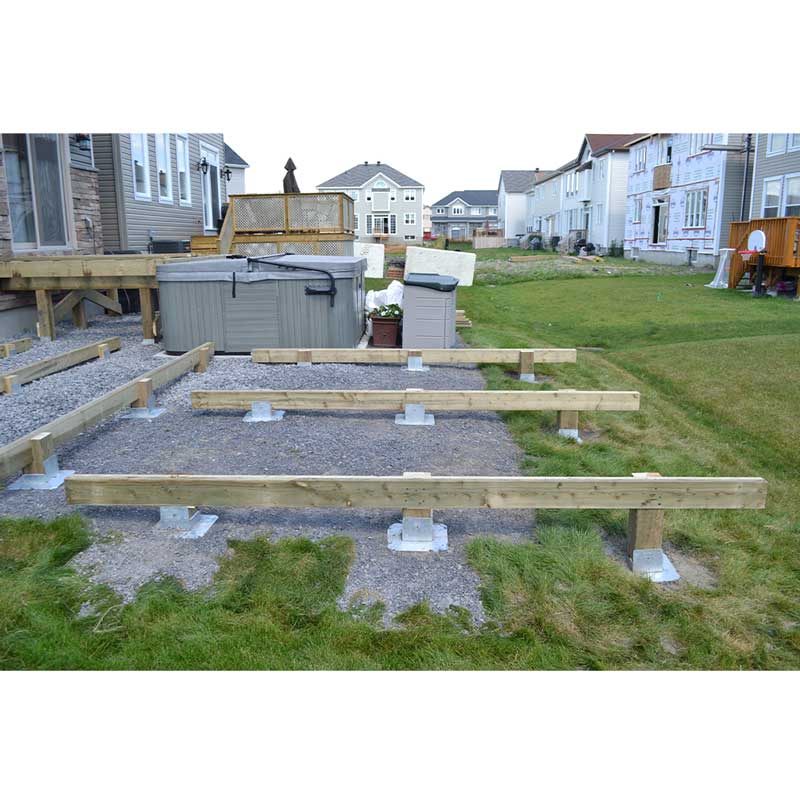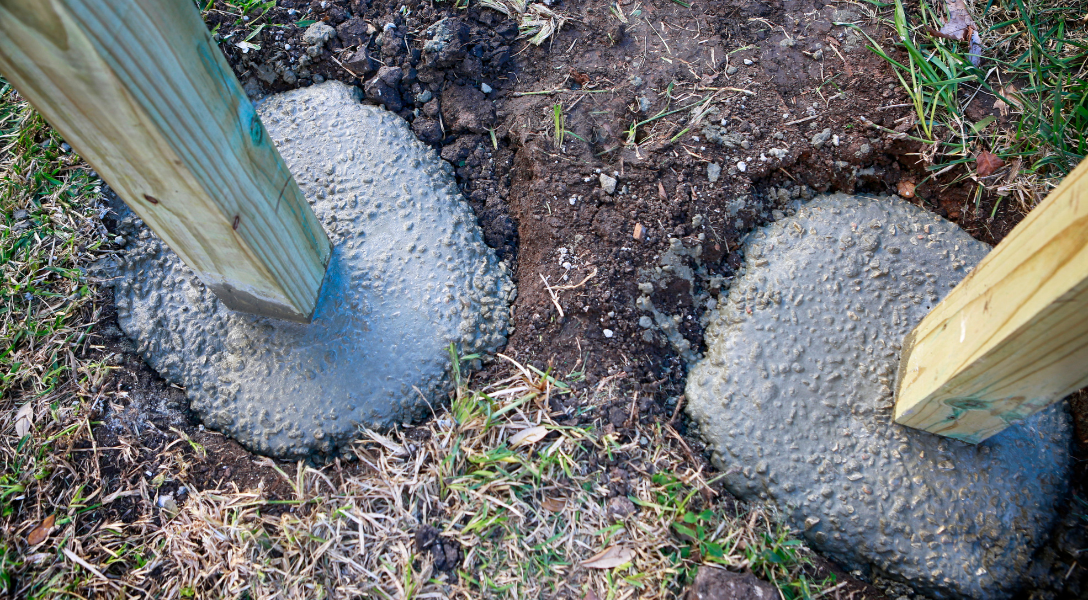A Strong Foundation for Your Oasis: Checking Out the Relevance of Deck Footings in Outdoor Structures
A Strong Foundation for Your Oasis: Checking Out the Relevance of Deck Footings in Outdoor Structures
Blog Article
Choosing the Right Deck Footings for Security and Resilience
When it concerns developing a deck, among the most vital decisions you will certainly make is selecting the ideal footings for security and toughness. The durability and safety of your deck depend greatly on the sort of footings you pick, as they supply the important assistance and security to hold up against the test of time. With a myriad of alternatives offered, it can be overwhelming to establish which grounds are best suited for your certain needs. In this conversation, we will certainly discover the different kinds of deck footings, think about the vital aspects to evaluate when making a choice, and dig into the benefits and drawbacks of various options. By the end, you will have a clearer understanding of the selections at hand and be much better geared up to make an educated decision for your deck job.
Kinds Of Deck Grounds
These grounds are composed of a round opening loaded with concrete, which provides a strong structure for the deck blog posts. Concrete pier footings are fairly simple to install and provide outstanding stability, making them a prominent selection for lots of deck jobs.
One more type of footing is the helical pile ground. Helical piles are steel shafts with helical plates affixed to them. These footings are installed by screwing them right into the ground, which produces a protected foundation for the deck. Helical pile grounds are optimal for areas with challenging dirt problems, as they can be set up in practically any type of type of soil. They additionally permit simple adjustment and leveling of the deck if needed.
Alternatively, some contractors opt for precast concrete grounds. These footings are made of long lasting concrete and be available in different sizes and shapes to accommodate various deck designs. Precast concrete grounds are hassle-free to install and give a steady base for the deck framework.
Lastly, another alternative is the post-in-anchor footing system. This kind of footing entails driving a metal support into the ground and affixing it to the deck message. It offers versatility in regards to positioning the deck messages and is appropriate for decks with lightweight frameworks.
When choosing the right sort of deck footing, it is vital to consider elements such as dirt problems, deck load, and regional building regulations (Deck Footings). Consulting with a professional service provider or architectural designer can aid guarantee the ideal ground is chosen for a steady and risk-free deck
Variables to Think About When Selecting Grounds
When selecting the proper grounds for a deck, it is crucial to very carefully take into consideration numerous elements such as dirt problems, deck lots, and adherence to neighborhood building regulations. These elements play a significant function in making certain the security and sturdiness of the deck structure.
The kind of dirt on which the deck will be developed identifies the type of footings called for. On the other hand, decks developed on clay or large soils may require footings that can suit the dirt's propensity to broaden and contract.
An additional essential element is the deck load. The weight of the deck, including the materials utilized and any type of potential live loads such as furnishings or celebrations, need to be thought about when picking grounds. The grounds must be made to bear the weight of the deck and disperse it equally to prevent any type of architectural issues or failings.
Lastly, adherence to local structure codes is critical. see post Building ordinance vary from region to region, and it is vital to adhere to the specific requirements established by the local authorities. Deck Footings. These codes make certain that the deck is built securely and fulfills the necessary requirements for structural stability and load-bearing capability
Concrete Grounds: Advantages And Disadvantages

Concrete footings offer several advantages and disadvantages when used as the structure for a deck. On the favorable side, concrete grounds supply superb security and longevity.
Another advantage of concrete footings is their versatility. They can be poured right into various forms and sizes to accommodate various deck styles and setups. Concrete grounds can be customized to fit the details requirements and demands of the deck framework.
Nonetheless, there are also some downsides to using concrete footings. One major disadvantage is the price and labor associated with their installment. Concrete footings require excavation and frequently need the aid of hefty equipment. This can enhance the overall price of the deck job and may need expert aid.

Helical Piers Vs. Sonotubes: Which Is Better?
In considering the structure alternatives for a deck, the comparison between helical piers and sonotubes is critical Recommended Site in determining the premium choice. Helical piers, likewise referred to as screw piles, are steel shafts with helical plates connected to them. They are turned into the ground using hydraulic equipment, offering a stable and resilient structure for the deck. On the various other hand, sonotubes are round forms made from cardboard or fiber material that are loaded with concrete. They are placed in an opening explored the ground and provide support for the deck.
When it comes to stability and longevity, helical piers have the top hand. The helical plates on the piers create a strong grip with the soil, stopping any movement or moving of the deck. This is especially advantageous in locations with unstable or changing soil conditions. Sonotubes, on the other hand, depend only on the concrete filling up for security, which might not provide the exact same level of strength and resistance.
In regards to setup, helical piers are relatively much easier and faster to set up compared to sonotubes. The hydraulic equipment made use of to twist the piers right into the ground ensures a fast and effective process. Sonotubes, on the various other hand, require excavating openings and pouring concrete, which can be time-consuming and labor-intensive.
In addition, helical piers are an even more versatile alternative. They can be utilized in numerous soil conditions and can be changed or strengthened if needed. Sonotubes, on the various other hand, may require added assistance, such as rebar, in specific dirt conditions or areas with high tons requirements.
Selecting the Right Footings for Your Deck's Dimensions
For optimal architectural honesty, it is crucial to meticulously choose the appropriate footings that line up with the dimensions of your deck. The dimensions of your deck, including its length, elevation, and width, play a substantial duty in determining the type and size of footings called for.
When choosing footings for your deck, it is essential to think about the load-bearing ability of the soil. The weight of the deck, combined with the weight of any furniture or individuals on it, exerts a significant force on the footings (Deck Footings). It is vital to pick footings that can properly sustain this weight without shifting or sinking over time.
Larger decks with greater measurements require larger footings to give sufficient stability and support. The shape of the footings, whether they are round or her response square, depends on the style and format of the deck.
Conclusion
In final thought, choosing the appropriate deck footings is important for ensuring security and resilience. Aspects such as the kind of footings, the deck's measurements, and the pros and disadvantages of various alternatives need to be thought about.
These grounds consist of a cylindrical hole filled with concrete, which provides a solid foundation for the deck messages. Concrete pier footings are reasonably easy to set up and provide outstanding stability, making them a popular option for numerous deck jobs.
Precast concrete grounds are hassle-free to set up and offer a secure base for the deck structure.
It offers adaptability in terms of positioning the deck messages and is ideal for decks with lightweight frameworks.
Concrete grounds offer numerous advantages and drawbacks when utilized as the foundation for a deck.
Report this page